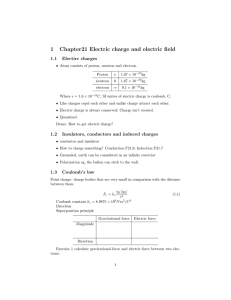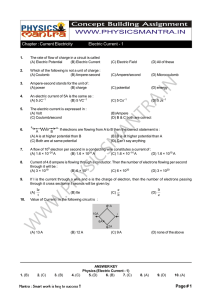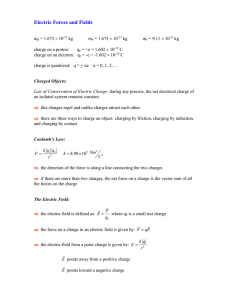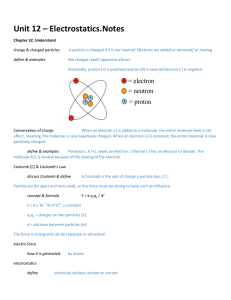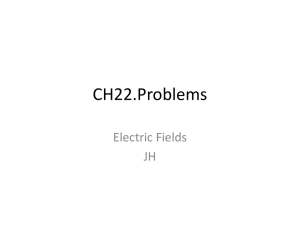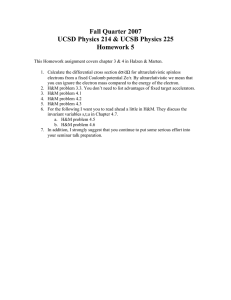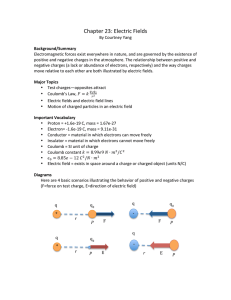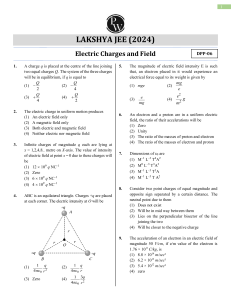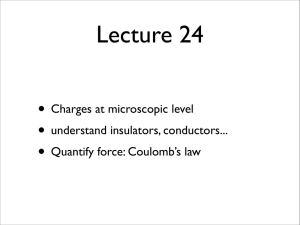1. Current is defined as the amount of charge per unit time or I = q / t
advertisement
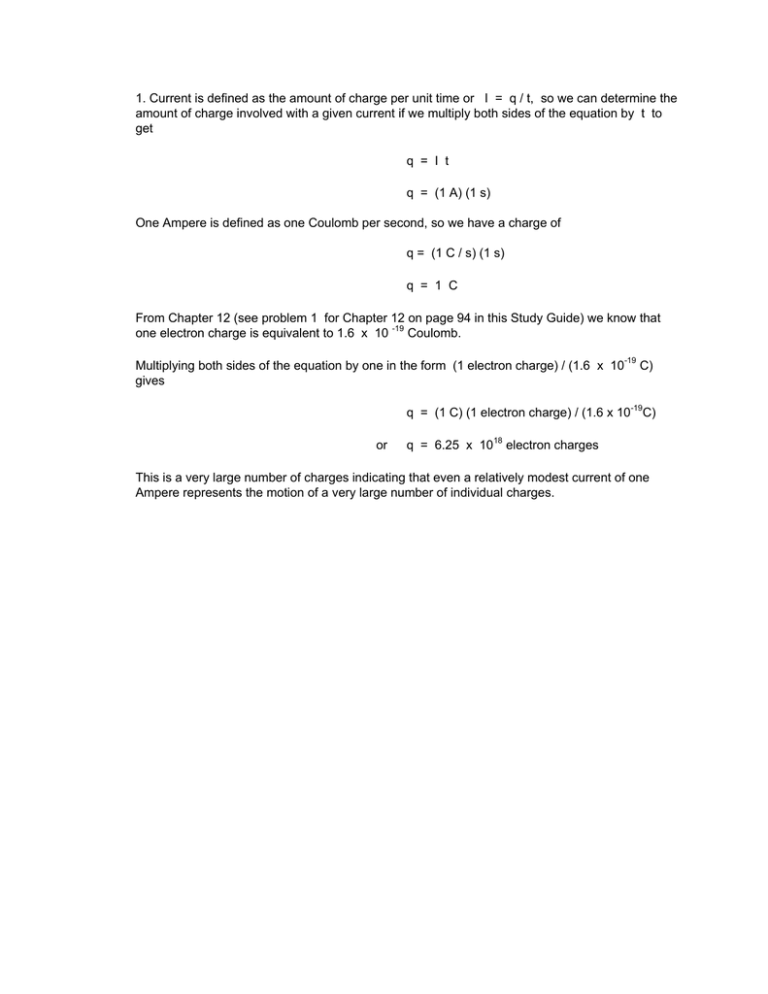
1. Current is defined as the amount of charge per unit time or I = q / t, so we can determine the amount of charge involved with a given current if we multiply both sides of the equation by t to get q = I t q = (1 A) (1 s) One Ampere is defined as one Coulomb per second, so we have a charge of q = (1 C / s) (1 s) q = 1 C From Chapter 12 (see problem 1 for Chapter 12 on page 94 in this Study Guide) we know that one electron charge is equivalent to 1.6 x 10 -19 Coulomb. Multiplying both sides of the equation by one in the form (1 electron charge) / (1.6 x 10-19 C) gives q = (1 C) (1 electron charge) / (1.6 x 10-19C) or q = 6.25 x 1018 electron charges This is a very large number of charges indicating that even a relatively modest current of one Ampere represents the motion of a very large number of individual charges.
